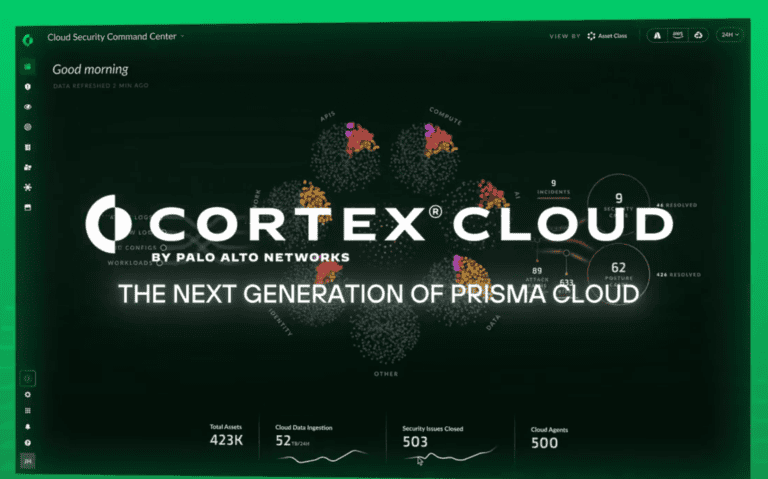Cortex Cloud has been unveiled, characterized by Palo Alto Networks as the next-generation variant of Prism Cloud. With this new offering, the security company aims to bundle its CDR and CNAPP skills on the Cortex platform for optimal visibility and ease of use.
Palo Alto cites research from its own Unit 42 showing how much danger cloud environments are in: 80 percent of security incidents occur in cloud environments, to name one headline statistic. In addition, cloud attacks are increasing rapidly, with a 66 percent increase in this category in 2024 alone compared to 2023. The main problem is a huge attack surface, which, thanks in part to a lack of oversight among organizations, gives attackers plenty of opportunities to strike cybercrime gold.
Cortex Cloud versus old approach
Cortex Cloud primarily aims to improve the attack response capabilities inside organizations. Traditional cloud security approaches are claimed to focus too much on “peace-time” approaches, according to Palo Alto. The company refers to tooling that mainly measures one’s own security posture and scans for vulnerabilities.
If one were to explain this viewpoint in a more positive light, as rival company Check Point does with CloudGuard, the emphasis is instead on prevention being far better than the cure. Nevertheless, even with optimal preparation, a breach can occur. Sometimes, an emergency necessitates a solution to answer the call. Cortex Cloud is aiming to do just that. It is additionally designed to take data from third-party tools for a centralized view including AI-driven insights and remediation wherever it is needed.
“As more critical business applications move to the cloud, cloud security must expand to include industry-leading runtime protection”, says Lee Klarich, CPO at Palo Alto Networks. “And to make it as easy as possible for our customers to adopt end-to-end cloud security, we’re including CNAPP at no additional cost for every Cortex Cloud Runtime Security customer. With Cortex Cloud, we are delivering the next generation of cloud security — enabling organizations to swiftly prevent, detect, investigate, and respond to evolving threats across their entire enterprise.”
Platformization at its peak
Consolidation is the magic word within security today, as we discussed at length ourselves late last year. SE Manager Netherlands at Palo Alto Networks Patrick de Jong emphasized what his company’s vision is in this area. “A security platform is an integrated cybersecurity solution that brings together various security systems in a scalable, unified architecture. It reduces management complexity and increases operational efficiency with comprehensive protection. A platform [approach] ensures consistent security and enables faster response to threats.” This is in contrast to point solutions, which Palo Alto Networks says only create unnecessary complexity.
Not everyone mentions this development by name; Palo Alto does. The company even talks explicitly about “platformization,” a word that still felt like a novelty to some of its security rivals which we spoke to last year. For a security player like Palo Alto Networks, which already offers a comprehensive cloud security platform, repackaging and consolidating existing tooling is a lot quicker to accomplish than it is for others. Competitor Check Point, for example, chose to abandon its own CloudGuard CNAPP and partner with Wiz for this offering.
Also read: Check Point and Wiz team up for CNAPP consolidation
